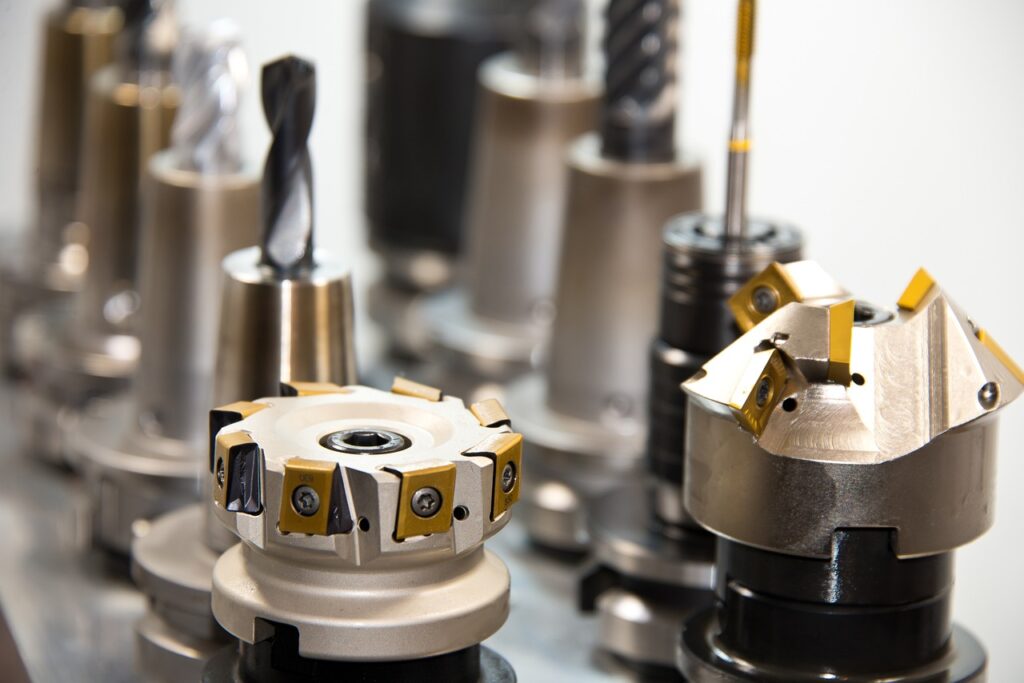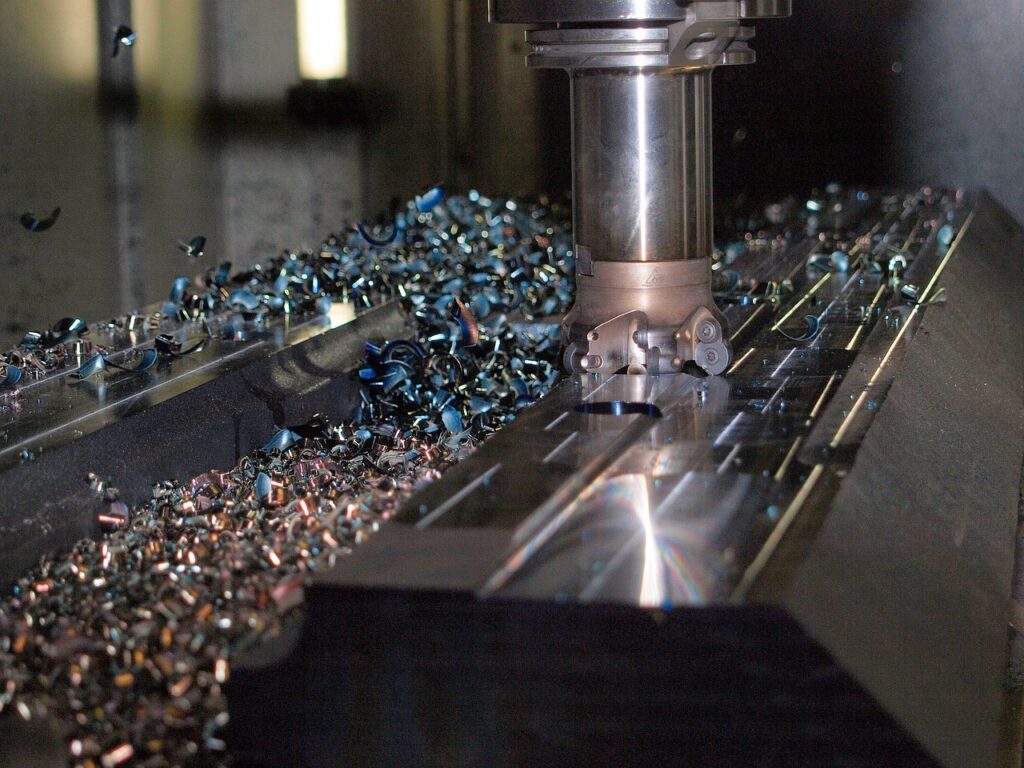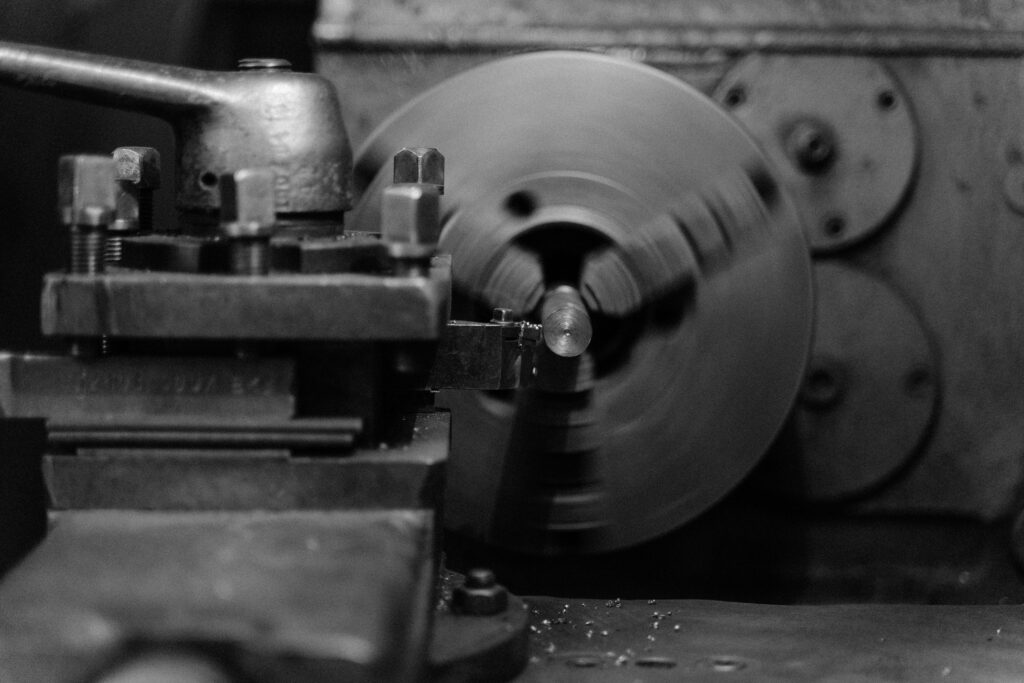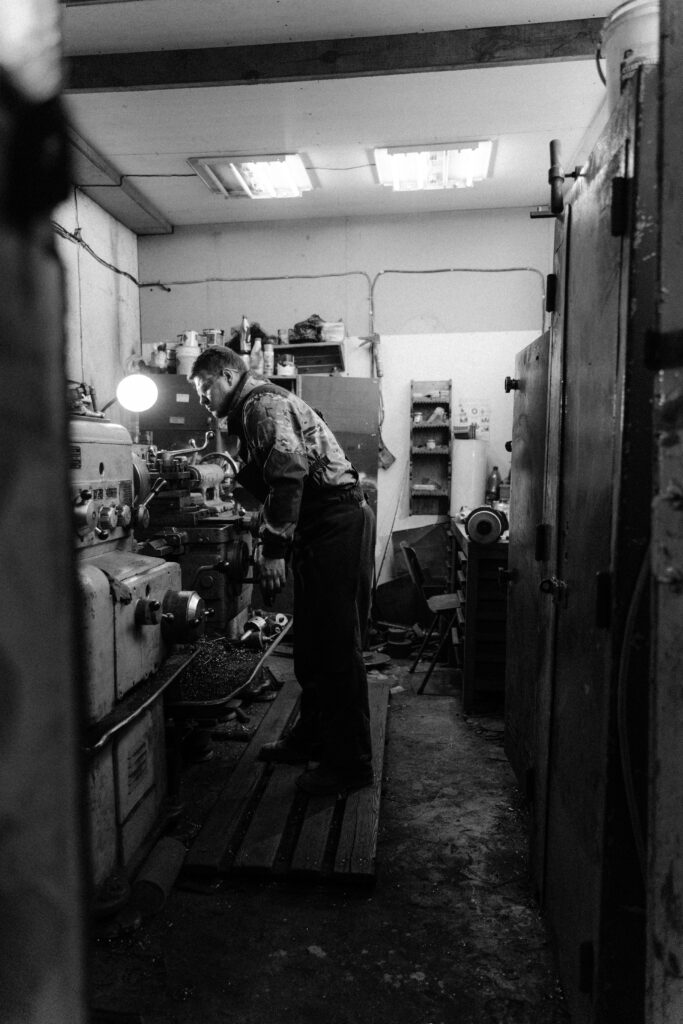Tool and die makers create the custom parts and tools that keep factories moving. These experts produce the precision pieces needed for car engines, electronics, and much more. Their skills are essential because modern manufacturing relies on accurate, dependable parts.
Today, the national average salary for tool and die makers in North America is between $55,000 and $70,000 per year. Certified professionals can earn 10–15% more than non-certified workers.
Demand is high for tool and die makers. According to recent reports, rising labor shortages and the need for technical skill are causing salaries to climb. As many experienced workers retire, the supply of skilled tool makers can’t keep up with manufacturing’s needs.
Salaries for tool and die makers shift a lot from state to state. Local demand, industry presence, and cost of living all play a part in what these professionals can earn. If you’re looking to start or grow a career in this field, knowing where pay is highest can help you make an informed move.
This guide breaks down tool and die maker salaries by state. You’ll see how factors like location and experience affect pay, so you can choose where your skills might be worth the most.

Tool and die makers keep modern manufacturing running. You’ll find their work in nearly every factory, behind almost every machine that produces parts out of metal or plastic. Let’s take a closer look at what these skilled professionals really do and why their jobs matter.
Daily Responsibilities
These makers do much more than just cut and shape metal. Their job blends technical skill with hands-on expertise. Here’s what they get up to in a typical day:
- Design and build precise tools like molds, dies, jigs, and fixtures
- Operate machines: lathes, mills, grinders, and CNC equipment
- Inspect finished products for accuracy and function
- Repair and fine-tune tools to keep them working smoothly
- Read technical drawings and blueprints
- Measure carefully, often down to thousandths of an inch
You can think of a tool and die maker as a problem-solver who turns a flat piece of steel into the key part a factory needs to work at full speed. More details about their hands-on tasks can be found in this overview on Wikipedia.
Skills Required
The job calls for a sharp eye and steady hand. Here are the main skills tool and die makers use daily:
- Math and geometry skills — for precise measurements and layouts
- Mechanical reasoning and troubleshooting
- Reading CAD drawings or blueprints
- Manual dexterity and a feel for machines
- Attention to detail — there’s no room for error when tolerances are tight
Modern tool and die makers often need to work with computers, too. Many factories use CAD software and computer-controlled machines, so being tech-savvy helps.
Industries That Hire Tool and Die Makers
Most tool and die makers work in big industries tied to manufacturing, but they’re needed across the board. Common employers include:
- Automotive plants (for car parts, engines, and frames)
- Aerospace companies (for aircraft parts and assembly jigs)
- Electronic device makers
- Appliance manufacturers
- Plastics and packaging companies
According to data from the Bureau of Labor Statistics, most jobs are in motor vehicle manufacturing, aerospace, and metalworking. Detailed stats on hiring across industries are available at the BLS industry profile for tool and die makers.
The Impact of New Technologies
The classic picture of a tool and die maker hunched over a manual lathe is changing. These days, the job often means running computer-controlled machines, working closely with engineers, and using 3D modeling. CNC machines, computer-aided design, and even 3D printing now play a huge role. Staying current with tech is just as important as knowing how to cut steel.
Tool and die makers are the backbone of custom manufacturing, supporting everything from quick-turn prototypes to mass production. This mix of old-school skill and modern tech keeps them relevant in today’s ever-changing factories.
Average Tool and Die Maker Salaries: Nationwide Overview
Tool and die makers are paid well for their skill, with pay rates that outpace many other trades. Salaries for these hands-on experts reflect the need for experience, attention to detail, and the challenge of getting every part just right. If you’re comparing job prospects nationwide, knowing the typical pay scale helps you spot where you stand and what’s possible as your career grows.
National Salary Ranges for Tool and Die Makers
The average pay for tool and die makers in the United States lands comfortably above the national average for most blue-collar jobs. Fresh data from industry sources highlights the pay scale across different experience levels.
- Hourly wage range: About $19.67 at entry level to $38.56 for highly experienced pros.
- Typical hourly average: $28 to $29 for most workers.
- Annual salary range: Most tool and die makers take home between $41,000 and $84,000 each year.
- Median annual salary: Around $57,000 to $62,800 based on multiple salary trackers.
Experienced tool and die makers, especially those with more than a decade on the job or working in busy manufacturing states, often find their pay at the higher end. Entry-level workers tend to start lower but see solid gains in the first few years.
If you want more details on current averages, check out real-time salary reports from sites like Glassdoor and Talent.com.
Bonus Pay and Other Compensation
While the base wage sets the floor, bonuses and profit sharing can add a pleasant bump at year’s end. Many employers offer:
- Bonuses: $500 to $5,000, depending on company size and personal performance.
- Profit-sharing: Ranges from $525 to $5,000 on top of regular pay.
- Overtime: Since this field often runs on production schedules, extra hours can push annual take-home higher.
These extras make a difference, rewarding experienced workers and those who step up when demand spikes.
What Affects a Tool and Die Maker’s Pay?
Many factors shape tool and die makers’ salaries—even if you’re doing the same work as someone three states away.
- Location: Big manufacturing states and cities pay more.
- Industry: Auto, aerospace, and appliance factories set higher pay scales.
- Experience: Wages rise quickly with a few years under your belt.
- Education & Credentials: Advanced technical training and certifications can unlock higher wages.
- Management roles: Supervisors and lead makers get a solid bump over shop-floor staff.
Curious how your current role compares? Industry platforms like Indeed post up-to-date numbers from across the country, plus tips for boosting your earnings.
Why the Pay Range Is Wide
Tool and die making is a skilled trade, but pay spreads out based on more than location. The best-paid jobs—often in custom shops, major auto plants, or aerospace facilities—require precision, flexibility, and strong problem-solving with new tech.
Meanwhile, smaller shops or regions with less industry demand may offer less, but could make up for it with a lower cost of living or steadier hours. Experienced makers who invest in new skills stay at the top of the pay scale as machine technology changes.
You can find a detailed breakdown from industry analysts at Zippia, which covers salary growth and trends for 2025.
In short, tool and die makers find themselves in a strong spot—solid pay, stable work, and the potential for higher earnings with the right mix of skills and experience.
State-by-State Salary Comparison: Where Do Tool and Die Makers Earn the Most?
Tool and die makers see a real difference in pay depending on where they work in the U.S. Some states lead with higher salaries because of their booming manufacturing hubs, while others pay less due to smaller industries or a lower cost of living. Looking at recent numbers, it’s clear there’s a gap between the top, mid-range, and lowest-paying areas. Let’s break down the states offering the best—and worst—pay, plus a look at the middle group and big-picture regional trends.
Top Five Highest-Paying States for Tool and Die Makers
Some states stand out for offering tool and die makers the highest paychecks. This is often due to a strong presence of high-tech manufacturing, major auto plants, or ongoing demand for skilled trades.

According to current data, the top five states for tool and die maker salaries are:
- Washington
Washington leads the pack thanks to its aerospace industry, including big employers like Boeing. The average annual salary climbs above $75,000 here, which reflects both the demand for skill and the state’s higher cost of living. - New York
Tool and die makers in New York also earn higher-than-average pay. Driven by major companies and factories around New York City and upstate manufacturing corridors, salaries can exceed $70,000. - Minnesota
Minnesota’s tool and die makers benefit from local medical device and equipment manufacturers. Pay averages around $69,000, thanks to specialized industry needs. - Wisconsin
Known as a pillar of American manufacturing, Wisconsin offers steady work and strong pay, with annual salaries from $58,000 to $76,000. Companies in the Milwaukee area are especially active. For more details, see this detailed breakdown of the best states for tool and die makers in 2025. - Michigan
Michigan’s car factories and long history of metalworking hold up the pay here. Detroit and the surrounding area offer average salaries near $68,000, fueled by automotive giants.
These states not only pay well, but they also offer a consistent need for experienced tradespeople in industries that depend on precision and quality.
Lowest-Paying States for Tool and Die Makers
Not every state pays top dollar for tool and die work. Some areas lag behind, mostly because they have fewer manufacturing jobs or a lower local demand for high-skill trades.
Currently, the lowest-paying states for this profession include:
- Mississippi
- Arkansas
- Kentucky
- Alabama
- West Virginia
In these states, the average salary for tool and die makers lands closer to $41,000–$46,000 per year. There are a few reasons for the gap:
- Smaller manufacturing base: Fewer big factories or advanced manufacturing centers means fewer specialized jobs.
- Lower cost of living: Wages tend to match local expenses—lower costs often mean lower pay.
- Limited local industries: When the main employers are smaller shops or basic manufacturing, wages flatten out compared to states with a larger industrial footprint.
If you want a full state list and salary estimates, check out this average tool and die maker salary by state.
Mid-Range States and Regional Differences
A wide group of states pay salaries around the national average, often falling between $54,000 and $62,000. These mid-range states still have strong manufacturing sectors, but may not have as many large employers or as high a demand for specialized skill.
Here’s where things tend to shake out:
- Midwest: States like Ohio, Indiana, and Illinois are home to many tool and die jobs. Wages here are solid, and job security is strong, but pay doesn’t quite reach the highs of Michigan or Wisconsin.
- South: Texas, Tennessee, and Georgia offer steady work, but wages land closer to the middle range. Texas, with its growing aerospace and automotive base, sometimes pushes to the upper end.
- West: While California pays more in certain metro areas, overall averages get pulled down by regions without much heavy industry.
- Northeast: Pennsylvania, New Jersey, and Massachusetts offer competitive pay, with the biggest numbers near major metro hubs where demand for precision trades runs high.
What’s clear is that tool and die makers in the Midwest and Northeast often earn more than their peers in the South. The West offers pockets of high pay, typically near aerospace, tech, or medical device manufacturers. Regional wage patterns reflect not just local economies, but where U.S. industry still relies on hands-on expertise and detailed custom work. For salary insights and city-by-city averages, see the current report on Indeed’s salary tracker.
Key Factors Affecting Tool and Die Maker Salaries by State
Tool and die maker pay doesn’t rise and fall by chance. Real differences drive what’s on your paycheck, even if the work is similar everywhere. Location, the kinds of industries around you, union jobs, access to good training, and the local job market all tip the balance. Here’s what to look for when comparing what tool and die makers earn in one state versus another.

Industry Presence: Where the Manufacturing Hubs Are
Salary often tracks where the big factories, auto plants, and aerospace facilities are found. States with dense industry clusters pay more because demand never slows down. For example, a shop in Michigan, with its auto giants, can offer a much higher starting wage than one in a rural area with few factories.
- Automotive and aerospace jobs drive steady, high-paying demand, especially in the Midwest and Northwest.
- Specialty manufacturing (medical devices, electronics) often boosts pay in places like Minnesota and California.
- Entry-level and experienced wages broken down by location are available on the Bureau of Labor Statistics site, showing how state economies shape paychecks.
Cost of Living: How Far Your Money Goes
A $70,000 salary means one thing in Seattle and something else in rural Alabama. Employers factor in the local cost of goods, housing, and everyday needs when they set pay. In states where everything costs more, tool and die makers can expect higher wages to keep up.
- High-cost areas (New York, Washington) pay more, but everyday expenses cut into take-home pay.
- States with lower living costs (Mississippi, Arkansas) offer less, but those dollars may go further.
- See real comparisons for trade wages and cost index by state in this rundown from ServiceDirect.
Unionization and Collective Bargaining
Unions matter—big time. Where unions are strong, wages tend to be above average. Unions negotiate for pay, health benefits, and better working conditions. In places where many factories have union contracts, you’ll see less wage compression.
- Midwest states still have solid union presence, which often keeps salaries higher for the same work.
- In non-union shops and states, wages may be lower, and raises might be less frequent.
- The impact of unions and pay rates is outlined in the Occupational Outlook Handbook.
Access to Training and Apprenticeships
Learning doesn’t stop once you’re hired. States with lots of technical schools, apprenticeship programs, or partnerships with big manufacturers help workers gain new skills—and earn better salaries. A certificate or journeyman status almost always nudges pay upward.
- Big cities and industrial states often have more apprenticeship options and up-to-date training centers.
- Investing in new skills, like computer-aided design or CNC machine operation, can pay off quickly.
- Find more about training pathways and career impacts at North Idaho College’s tool and die training program.
Market Demand and Job Openings
Last but not least, location shapes the job market. Areas losing manufacturing jobs won’t have many postings—or high pay—while booming states see wages rise as companies compete for skilled people.
- Fast-growing states compete to attract and keep skilled trades, using starting bonuses or regular raises.
- Low-demand regions may offer job security, but don’t push salaries upward as much.
- For a detailed salary overview and state averages, check the Salary.com breakdown of tool and die maker pay.
By weighing these factors, tool and die makers can choose where to settle and which states offer the best rewards for their skills.
Career Advancement and Future Salary Trends for Tool and Die Makers
Many tool and die makers want to know not just what they can earn today, but how their pay might grow with more skills or new roles. As factories update equipment and demand for tight-tolerance parts holds steady, career opportunities look promising—especially for those willing to specialize or learn new technologies.
How Certifications Boost Salaries
Getting industry-recognized credentials gives tool and die makers an edge. Certifications show that you have mastered skills beyond basic shop work. Employers value this because it means less training, fewer mistakes, and a higher standard of work. Makers who hold credentials from groups like the National Institute for Metalworking Skills (NIMS) or the American Society of Mechanical Engineers tend to earn more, especially in busy industrial states.
Certifications can open doors to higher pay and management tracks. Some shops even pay bonuses or offer promotions to workers who earn new certificates. For a detailed guide on options, check out these top tool and die certifications and their benefits.
The Value of Specializing in CNC Programming and Automation
The biggest jumps in pay often go to those who specialize. CNC programming is especially hot, since most shops now run computer-controlled machines to speed up and standardize work. Tool and die makers who can set up, troubleshoot, and program CNC machines command higher wages than their manual-only peers.
- CNC specialists often work on complex setups that demand more than just pushing buttons—they’re fluent in G-code, familiar with editing programs, and comfortable optimizing tool paths.
- Automation experience is moving from nice-to-have to must-have. As robots and machine vision get more common on the factory floor, shops want people who understand both the craft and the tech.
Shops are looking for tool and die makers who don’t just know the basics but can run a full array of tech. That saves time, cuts errors, and boosts profits.
Impact of New Technologies on Earnings
Modern tool and die work is more digital than ever. Factories want staff who can use CAD/CAM (Computer-Aided Design/Computer-Aided Manufacturing) software to design parts on-screen, simulate production, and even 3D print prototypes. The more comfortable you are with these tools, the better your pay prospects.
- CAD/CAM users often see higher salaries because they’re driving projects from idea to finished tool.
- Additive manufacturing (3D printing) know-how is in demand. Employers want makers who can blend old-school metalwork with new digital tools.
- Being “fluent” in new software or robotics is also a plus, especially as more companies modernize.
The Bureau of Labor Statistics notes that while traditional jobs may dip as automation increases, higher-skilled tool and die makers who learn new tech will still be in demand. Find more on the skills that help you stand out in this career overview from the BLS.
Emerging Markets and Skills That Pay More
Some industries are growing faster than others, giving tool and die makers a chance to specialize and lift their salaries even higher. Medical device manufacturing, aerospace, custom electronics, and green energy equipment have an ongoing need for workers with deep skills.
- Medical device and aerospace jobs pay well, thanks to tough regulation and very precise work.
- Custom and short-run shops offer higher hourly rates but may want broader skills, like both manual setup and CNC editing.
- States and cities seeing factory upgrades or new tech hubs also see bumps in pay for highly skilled trades. For a look at how the job market is shifting, check out this update on industry trends and demand.
Future Salary Trends for Tool and Die Makers
Looking ahead, automation will keep reshaping the shop floor, but there remains strong need for hands-on problem solvers—especially those who move fast with new tools. Tool and die makers who keep learning, pick up certifications, or shift into specialties will continue to see salaries outpace average trade jobs.
Key trends to watch:
- Wages rise fastest for those who add skills in CNC, robotics, and CAD/CAM.
- States and cities investing in advanced manufacturing see bigger bumps in pay.
- Experienced makers who take on mentoring or training roles can expect steady raises.
Fresh skills and certifications lead to higher paychecks and better job security. The more you bring to the table, the more options—and earnings—you’ll have, no matter where you work.

Conclusion
Tool and die maker salaries depend on where you work, but skill and flexibility matter just as much. States with strong manufacturing—like Washington, New York, and Michigan—offer top pay, while others may offer a lower cost of living to help balance smaller paychecks. The gap between entry-level and experienced pros is wide, showing the real payoff of growing your abilities over time.
If you want to earn more, keep your skills sharp and consider moving to states with higher demand. Learning new tech like CNC programming and CAD/CAM opens doors to better jobs and bigger salaries. Use this information to guide your career moves, whether you’re just starting or ready for new challenges.
Share your experience or any tips in the comments below. Thanks for reading—your next big opportunity could be just one skill, or one state, away.
